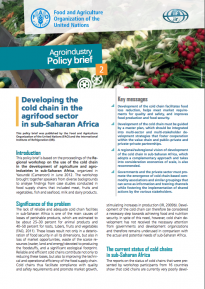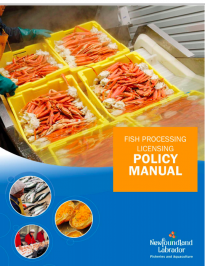Supportive Policy Environment for Freezing
Useful broad policy guidelines related to the development and optimization of freezing technology, as part of the cold chain, are detailed in the following sections.
Governance
Governance
- Prepare and implement a strategic cold chain development plan in partnership with the private sector. The plan should be consistent with other sectoral development plans, such as those for agriculture, infrastructure, agro-industry, distribution, and training.
- Define quality regulations and standards, particularly in relation to food safety and environmental sustainability.
- Monitor the application of standards and regulations through effective compliance control, to protect public health and ensure the confidence of consumers and value chain stakeholders.
Training and Research and Development
Training and Research and Development
- Support vocational training institutions in all concerned sectors, particularly those related to logistics, maintenance, engineering and the operation of refrigeration equipment.
- Facilitate the transfer of technologies to strengthen local capacities.
- Support research and development efforts that respond to sub-Saharan Africa’s specific needs and strengths (e.g. solar energy) by ensuring that national and regional authorities play complementary roles.
Investments
Investments
- Upgrade key infrastructure and related services (electricity, transport, markets, etc.) to ensure that cold chain systems are effectively implemented and efficient.
- Design and put in place incentives to promote investment and capacity building in key agrifood subsectors (support for land acquisition, private–public partnerships, etc.).
For the private sector
For the private sector
- Promote the establishment of commodity and other private-sector associations around the cold chain, and actively participate in their functioning. These organizations can serve as good information and training channels.
- Foster dialogue among value chain actors to develop a shared vision of needs and markets.
- Learn how to spend wisely and save money through feasibility studies before purchasing equipment and instead on “preventive” maintenance, optimizing transportation, storage and handling conditions, compliance with standards and good practices, etc.
- Participate in vocational training and foster awareness-raising and continuous training of the personnel of private-sector enterprises.
Key Publications
Developing the cold chain in the agrifood sector in sub-Saharan Africa Policy brief based on the proceedings of a Regional workshop on the use of the cold chain in the development of agriculture and agro industries in sub-Saharan Africa. | |
Fish processing licensing policy manual This manual provides guidance to the review and assessment process of the Fish Processing Licensing Board Newfoundland and Labrador (Canada) and identifies important factors in the recommendation-making process. |
More Resources
More Resources
Reducing Food Loss and Waste (FLW) in the 4th All Africa Postharvest Congress and Exhibition (AAPHCE)
31 October 2023
31 October 2023
The 4th All Africa Postharvest Congress and Exhibition (AAPHCE) is a follow up to the series of biennial events together diverse stakeholders aimed at addressing the pertinent issue of postharvest loss reduction in the African...
One of the major issues prevailing in the fisheries and aquaculture industry in Sri Lanka is the high loss and waste of fish, and it has become necessary to introduce strategies aimed at preventing and...
In order to support long-term capacity building for women, the SSF Umbrella Programme conducted a review to identify successfully adopted post-harvest best practices that should be disseminated more widely to help reduce fish loss and...













